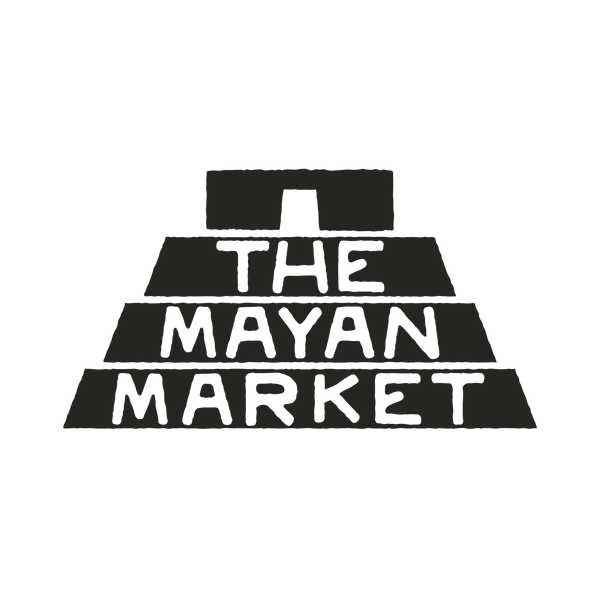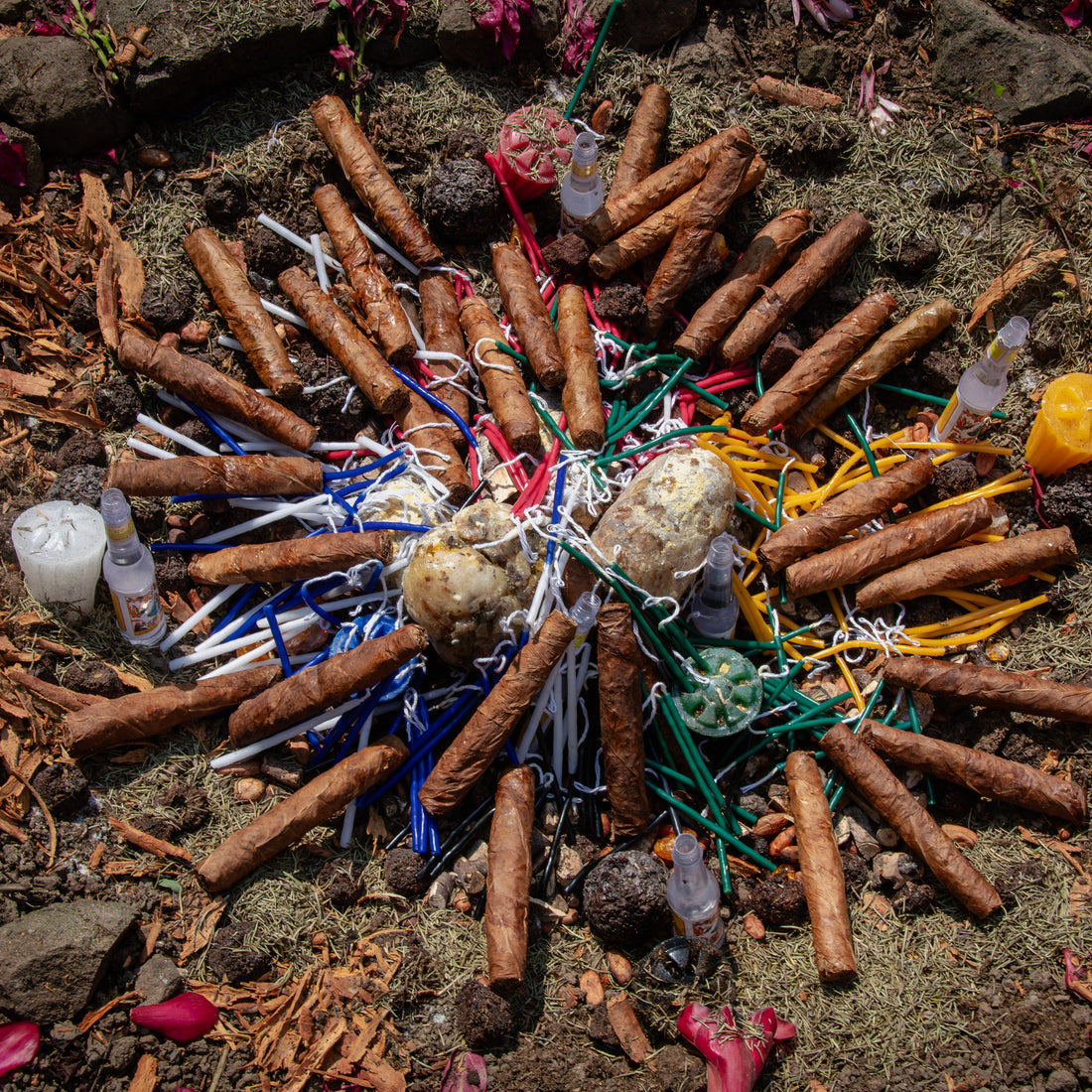Wajxaqib’ B’atz’, The Maya Cholq’ij New Year
In a moment of stillness and tranquility, when our world was in restful peace, a single spark of creation arrived, which ushered the words of possibility. Not a single seed was born yet; our creators were still sowing our existence and discussing between themselves how our world would be shaped.
This was a long process, it required many conversations and trials. That was until the Month was born, and each of the energies of the sacred Cholq’ij began arriving and forming our existence. The ancient Maya wrote about this creation in the Chilam B’alam of Chumayel, one in a series of books written during the colony in the attempt of safeguarding their wisdom. This text describes how each of the energies was created, and brought their gifts to our world, one by one arriving to existence. In the words of the Maya, we can read:
“Thus explained the ancient sage Mexchise, the Great Prophet of old, Napuc Tun, the Great Solar Priest, and he sang that, when the world had not yet awakened in ancient times, the Month was born and began to walk on its own… When the Month was born, the name of the day was also born, and the sky and the earth were created step by step: water, earth, stones, and trees. And the things of the sea and the earth were created.”
Once the 20 days were created, the Chilam B’alam says:
“…And then the days went to test one another, and they spoke thus: Thirteen and seven in group…With them, the month was born… when the sky and the earth were created, the trees, and the stones… a single cloud formed on its own and created the universe…”
Nowadays, that our world has been sowed and our eyes can gaze at the brilliance of creation, we always take the time to remember and honor the moment that allowed for our existence. We call upon our creators and makers:
-
Tzaq’ol, the builder of matter,
-
Bitol, the former of breath.
-
Alom, the giver of daughters.
-
K’ajolom, the giver of sons.
-
Tepew Q’ukumatz, the feathered serpent.
-
Xpiyakok, the two times elder.
-
Ixmukane, the two times midwife.
-
Junajpu and Xb’alamke, the twin heroes who overcame Xib’alb’a.
-
Jun Junajpu and Wuqub’ Junajpu, the fathers of the twin heroes who also went down to face their trials of Xib’alb’a.
-
Jun B’atz’ and Jun Chowen, the artists.
-
Ixkik’, the powerful woman Mother of Junajpu and Xb’alamke.
-
B’alam Kitze’ and Kaqa Palo Ja’, guardians of the east.
-
B’alam Aq’ab and Chomi Ja’, guardians of the west.
-
Majuk’utaj B’alam and Tz’ununi Ja’, guardians of the north.
-
Ik’i B’alam and Kak’ixa Ja’, guardians of the south.
In gratitude for the gift of life and the opportunity to experience a world full of wonder, we offer our thanks. We honor those who came before us, our guides, and the energies that surround us.
This happens on the day Wajxaqib’ (8) B’atz’, as it once marked the completion of our world. On this day, we remember the creation of everything that holds life within its being. We remember the creation of humans, trees, vines, birds, and rivers. Fundamentally, it is the most important celebration for the Ajq’ijab’.
And what is the meaning of Wajxaqib’ B’atz’? Why does it mark the beginning of existence?
In the beautiful writings of Maya poet and writer, Humberto Ak’abal, he describes the significance of this day. Wajxaqib’ symbolizes the eight guardians of the four corners of the universe, who are the first humans that gave way to our life. They are our guides, our protectors, and we always hold deep respect and reverence for them.
B’atz’ represents the monkey, an animal that is so important to keep in our minds during the beginning of a new cycle. But, why the monkey? If we read the Popol Wuj, we can remember the story of Jun B'atz' and Jun Chowen, great wise beings, masters of all the arts. They were highly skilled, but they were also egocentric. They didn’t carry their gifts with humility, and what they valued most was their love for themselves. In this way, they also represented weaknesses, being dual beings, both virtuous and flawed. The Nahual B'atz' calls us to seek balance, to begin a new cycle with renewed purposes, and to remember that ascent and descent are always close to one another. The Popol Wuj describes this story beautifully.
“Jun B’atz’ and Jun Chowen, as we have already said, were great artists… and despite their difficult lives, they became great wise beings. Amazingly, they mastered all the arts: music, singing, and painting; they were poets and sculptors. They knew how to do everything very well. They knew their origins and also knew that they were the successors of their parents, of those who had died in Xib’alb’a. They were great wise beings, Jun B’atz’ and Jun Chowen, and in their hearts, they also knew all the wonder of the birth of their brothers, the twins Junajpu and Xb’alamke. However, their wisdom was of no use to them, for they were blinded by envy and jealousy, and upon them fell the bitterness they had in their hearts.”
-
Version by Humberto Ak’abal.
The story of Jun B’atz’ and Jun Chowen serves as a powerful reminder to live our lives with humility and modesty. Despite their great wisdom and artistic talents, their arrogance and bitterness eventually led to their transformation into monkeys, showing us that without humility, even the greatest of gifts can be lost.
For this reason, every 260 days, Maya land shines with fires of gratitude, celebrating this important date of existence. It is said by grandmothers and grandfathers that the number 260 also has an important significance, as it represents the 9 months of human gestation, the 9 moons that we spend in our Mother’s womb. The Maya also represented this within their writings, as it is described in the Popol Wuj that grandmother Ixmukane grinded the corn 9 times to create the human being.
Even if many people are unable to spend today in ceremony, we can still connect to our inner strength. On this day, you can make a small offering to the Earth. You can light some candles for creation. If possible, light a red candle to the East, a black candle to the West, a white candle to the North, and a yellow candle to the South. You can place a light blue and green candle in the center of these. This represents all of the corners of the universe, as well as the Heart of the Sky and the Heart of the Earth. This can be encircled with flowers. You can also have the elements accompanying you by having a glass of water, some incense to represent the air, a stone to represent the earth, and the fire that will be kindled in your candles.
This day is all about giving thanks to our Creators and Makers, as well as all the beings who live on the earth. We give them offerings with a kind heart in exchange for our lives. Let us also thank Uk'u'x Kaj, the Heart of the Sky, and Uk'u'x Ulew, the Heart of the Earth. Let us express our gratitude to the four corners of the earth and our cosmos, as well as the four rays of creation, Ch'ipi Kaqulja, Rax Kaqulja, Nim Kaqulja, and Jun Raqan Kaqulja.
Let us thank all of the animals, who were the first beings entrusted with the vital task for safeguarding our planet. Let us give thanks to the trees and herbs for their medicine and teachings. Let us show gratitude to our ancestors for giving us life.
On this day, our intentions are everything. If it speaks to you, you can prepare a delicious meal to give to Mother Earth, create a powerful infusion, a cup of cacao, offer some rum, or sing and dance in appreciation. Let us come together today as a community and as humanity to give thanks for our lives and our world, and to reciprocate some gifts.
If you would like to learn more about the Cholq'ij Calendar and connect with your own Mayan Energy, check out our Free Mayan Calculator!
By Eline Baeza

